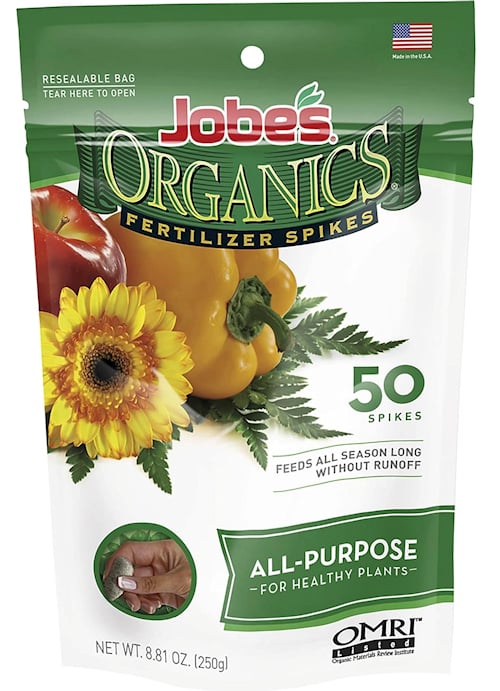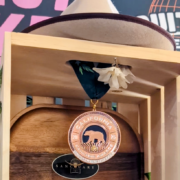Gold Header Ad
reserve your ad hereWhat is an organic nutrient spike? Good question, and the answer may really up your growing game. I’m The Rev—damn glad to meet you, heh heh—I’ve been growing cannabis for over 50 years now so I do think I know a thing or two. Spikes are basically concentrated areas of nutrients within your soil near your roots. You have likely seen these commercially available by companies like Jobe. There are a lot of synthetic crap versions, but there are also some good organic ones out there. So, for no muss no fuss, you could just go grab yourself some of those. Or, you could fashion your own versions. Let’s have a look at some spike info, shall we?

The commercial spikes above are a commercial example of the dynamic involved here. I will show you how to do your own spikes, and how to use them for the best results in my experience. Spikes placed at the start of flowering are all good. Don’t add spikes after a week into flowering. This, in my experience will result in better buds. If spike nutrients linger too long it can hinder resin/terpene production/expressions.
As usual, I am your friendly local human being 😊 writing this article (obviously) without using any AI writing, so enjoy the humanity LoL! Now, on with the show…

Nutrient Spikes — DIY
Your spikes don’t need to be fully dense and compacted like the commercially available kind. In fact, one of my favorite things to use as my spikes is granular bird guano, like dehydrated granular chicken poop is my favorite. The N-P-K is around 3-2-2 and you want a good balance for your spike. But you can build your own too, like:
- 1 part kelp meal and 2 parts crab shells, or…
- 3 parts bat guano (like 6-4-2) and 2 parts kelp meal, or…
- Use an all-purpose organic granular fertilizer like True Organics brand 5-4-5 N-P-K.
- You could use worm castings.
- You could use compost.

I like all purpose granular organic fertilizer types here best simply because in the spike itself it allows for more air between granules. More air means better aerobic processing by the microbeasties (microbial life). True Organics brand (photo below) makes an affordable and perfect all purpose granular fertilizer for this. Also, as I said bird guano in granular form is also very good here. Just make sure your N-P-K is covered almost equally, with a little less P (phosphorus), than N (nitrogen) and K (potassium), is my recommendation. It doesn’t have to be granular, that’s just preferred by me.

How to Best Use Nutrient Spikes
Here’s the important rules of making your own spikes. First you need to put a hole in the soil of the plant container immediately after it is transplanted. In 3 gallon containers I use a ½” dowel/plant stake to make holes in the soil about ¾ of the way to the bottom floor of the container. DO NOT put these holes into the freshly transplanted root ball of the plant. You make these holes out next to the sided of the container, where no roots have been to—yet. Misting the top layer of soil here helps to keep soil from falling back into the holes you make.

Basically, in a 3 gallon flowering container you could use 1 to 4 spikes. Depending upon how much food your plants will be needing—like topped vs. untopped plants, hot intense garden or mellower intensity gardens, etc. The most I ever use is 4 spikes each equidistant from each other. When I do use spikes, I normally use 2, and occasionally 3.

Then you simply fill the holes with your nutrient supplement(s) of choice here. Don’t use things like bone meal, langbeinite, or soft rock phosphate in spikes. Once they are filled simply put a bit more soil on top and then add your mulch layer, if you use mulch—and you should for sure, I think.
Can I Use Organic Nutrient Spikes on Vegging Plants?
Yup, you can. I very rarely do this, simply because I don’t need added nutrition during vegging usually. I make exceptions here for say, a mother clone that will be in the same container for a longer stretch. Or like if I know I have to let some vegging plants stay in smaller containers for longer than normal, I will often use a couple of spikes during transplanting of these plants.

Organic nutrient spikes are just one of the many tools I show you how to use in my latest book, True Living Organics, the Druid’s Edition—you can grab a copy here: Latest True Living Organics by The Rev.

Afterword Stuffs

The commercially available spikes are pretty long lasting, so keep this well in mind. You never want a decent supply of nutrients coming to your plants from an outside source during later flowering. The plant is designed by nature to use its own saved resources to power itself through its final stage before harvest. This is about the last three weeks before harvest. The plant will be getting 80% of its resources from itself. It’s all good as long as you make the spikes at the beginning of flowering.
Well, I’m outty for now, here’s another article by yours truly if ya want some more Rev: Liquid pH Meters and pH by Rev. Also, if you want some real current TLO growing information, check out my YouTubes channel: Rev’s True Living Organics YouTubes Channel. Catch ya back here next time. L8r G8rs.
- REv 😊

Get your Kingdom Organic Seeds Below…
JBC Seeds Authorized KOS Dealer
Riot Seeds Authorized KOS Dealer
I'm The Rev, and I have been with SKUNK for well over a decade now. I hail from Southern California, spent mucho time in Northern California, and now reside in Southern Oregon; always coastal. I am an all natural style cannabis grower and I have written a few books on the subject - check out True Living Organics, Druid’s Edition on Amazon - I have been growing for over 50 years, and I have been breeding cannabis for over 30 years. Check out JBC Seeds to see some exotic KOS selections. Growing connoisseur cannabis is what I teach mostly, growing it in living soil without using liquid organic nutrients to feed the plant. I am also a highly skilled synthetics grower, hydroponics, aeroponics, DWC/SWC/NFT, Ebb and Flow, and soilless, but I cringe when smoking synthetic grown herbs, so for the last 20 years or so I preach the artisan style of all natural growing, specializing in container growing. Cheers and welcome aboard.





